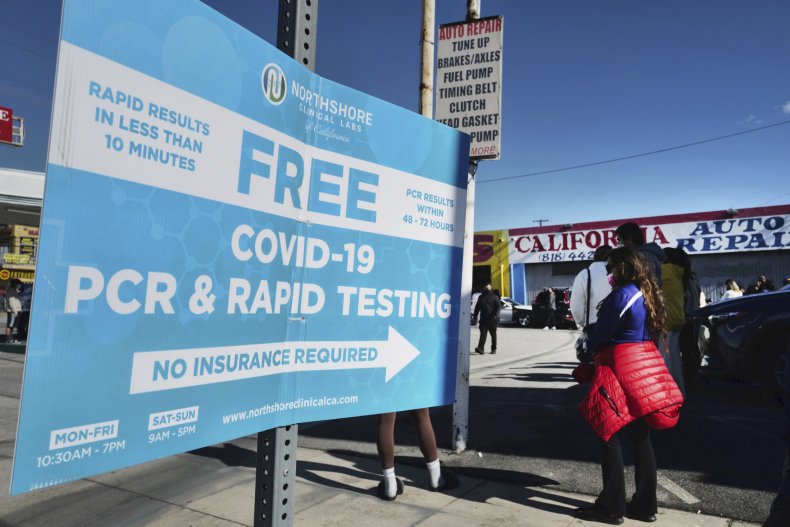California officially became the first state in the United States to surpass 5 million coronavirus infections since the start of the pandemic Tuesday as the state health department updated the statistics delayed by the Christmas weekend.
It was first to hit the grim milestone by a relatively wide margin. Among fellow large states, Texas stands at over 4.4 million cases, Florida surpassed 3.9 million over the weekend and New York has just over 3.2 million cases.
The state's death toll sits at just over 75,500, according to the California Public Health Department website.
Cases and hospitalizations are rising in the state, although not as rapidly as in some other other states and nationwide.
Last week, hospitalizations rose about 12 percent to 4,401, about half as many as the summer peak of nearly 9,000 caused by the Delta variant and about the same peak reached in July 2020. It's around one-fifth of the peak of over 22,000 the state was facing in January, just before vaccines were widely available.
The first COVID case was reported Jan. 25, 2020, and 292 days later, the state reached 1 million cases. Forty-four days afterward, 2 million was reached.

The milestone, as reported by the California Department of Public Health, wasn't entirely unexpected in a state with 40 million residents poised for a surge in new infections amid holiday parties and family gatherings forced indoors by a series of winter storms.
The state has fared far better than many other states dealing with a coronavirus surge, with areas in the Midwest and Northeast seeing the biggest jump in cases and hospitalizations amid frigid temperatures that have kept people indoors.
The U.S. Centers for Disease Control and Prevention lists California as a place with "high" transmission of the virus, along with nearly everywhere else in the country. But in the last week, California averaged 16.4 new cases per 100,000 people, less than a third of the national rate.
The timeline of COVID-19 in America often comes back to California. It had some of the earliest known cases among travelers from China, where the outbreak began.
The Feb. 6, 2020, death of a San Jose woman was the first known coronavirus fatality in the U.S. That same month, California recorded the first U.S. case not related to travel and the first infection spread within the community.
On March 19, 2020, Governor Gavin Newsom issued the nation's first statewide stay-at-home order, shuttering businesses and schools to try to prevent hospital overcrowding.
It is unclear how many of the newly reported cases were attributed to the Omicron variant. Much about Omicron remains unknown, including whether it causes more or less severe illness.
Scientists say Omicron spreads even easier than other coronavirus strains, including Delta, and it is expected to become dominant in the U.S. by early next year. Early studies suggest the vaccinated will need a booster shot for the best chance at preventing an Omicron infection, but even without the extra dose, vaccination still should offer strong protection against severe illness and death.
The Associated Press contributed to this report.

Post a Comment